Belgrade is located at the junction of the Danube and Sava rivers and the panoramic photo above is taken from the fortress.
However, our first look at Belgrade was quite a contrast to this scene. Beginning on March 24, 1999, for 78 days 19 Allied members began bombing regions of Serbia and Kosovo, with some of the first bombs targeted at Belgrade. The estimated number of people killed is set between 1,200 and 2,500 people including 89 children. Over 10,000 people were injured. One of the first casualties occurred at 2am on the 24th, killing 16 (mainly young) employees at the state RTS TV station. Other bombed sites in Belgrade included the Yugoslav Army General Staff building, the Chinese Embassy, a downtown hospital, several other military buildings, fuel tanks, virtually all RTS transmitters, and the nearby Avala TV tower. Throughout the country bridges, military sites, and places such as a chemical plant were bombed.
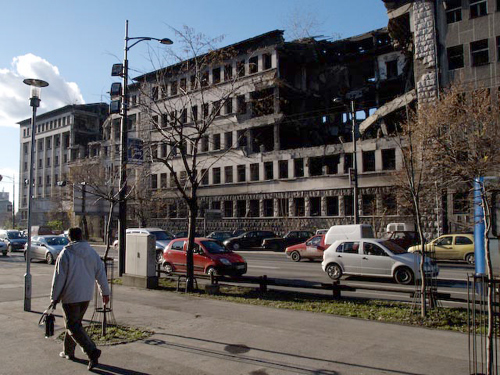 Some of the bombed buildings, such as the RTS building were never repaired, nor is there money to tear them down.
The NATO air strikes ended on June 10 when the United Nations adopted the Resolution 1244.
Some of the bombed buildings, such as the RTS building were never repaired, nor is there money to tear them down.
The NATO air strikes ended on June 10 when the United Nations adopted the Resolution 1244.
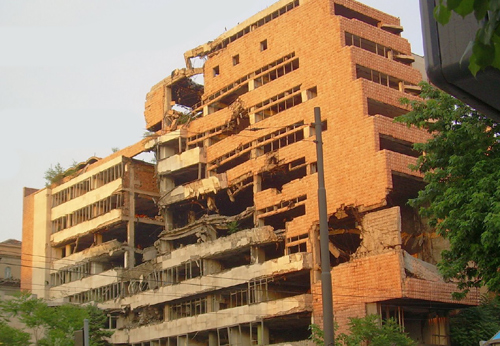
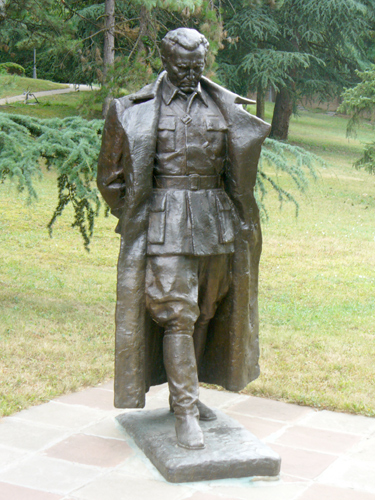
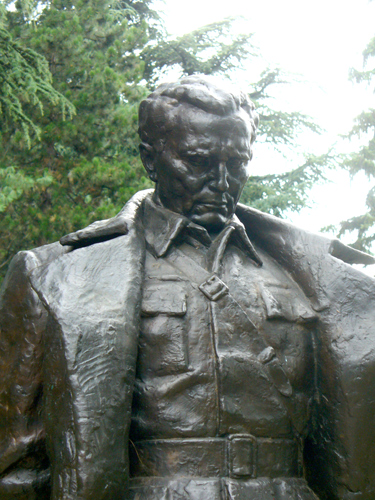
Josip Broz Tito was the leader of the Socialist Federal Republic of Yugoslavia from 1945 until his death in 1980. During World War II, Tito organized the anti-fascist resistance movement known as the Yugoslav Partisans. Later he was a founding member of Cominform, but resisted Soviet influence and became one of the founders and promoters of the Non-Aligned Movement.
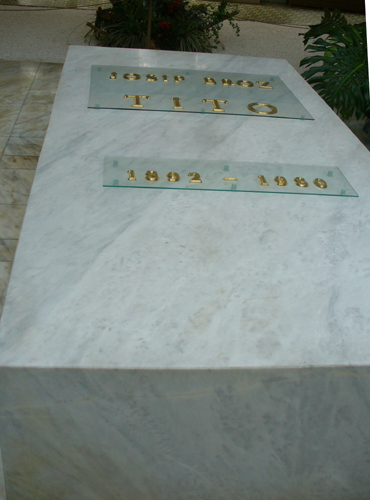 The tomb of Marshall Tito at the Tito Memorial.
The tomb of Marshall Tito at the Tito Memorial.
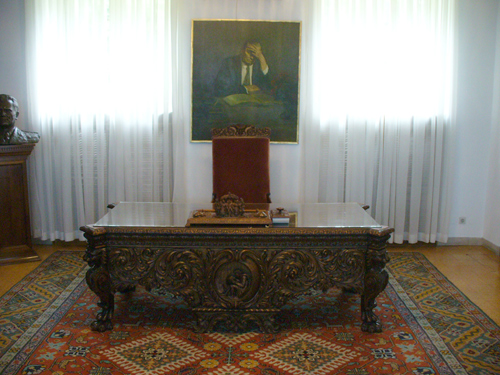 The desk from his office.
The desk from his office.
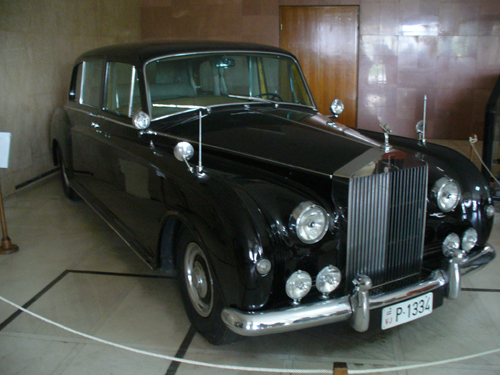 One of his cars.
One of his cars.
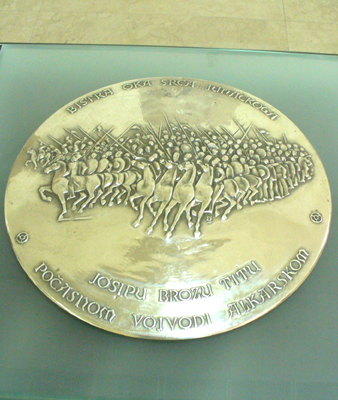
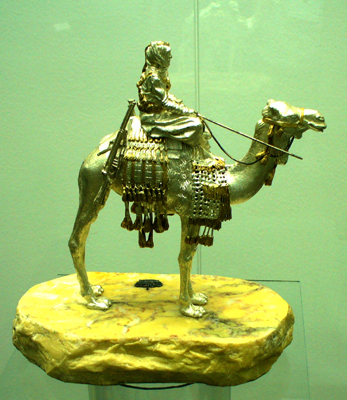
Some of the silver pieces that Tito had received as gifts.
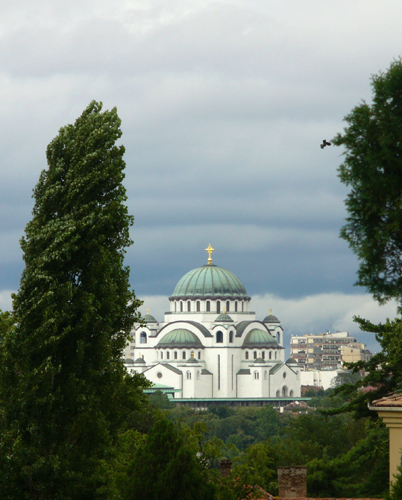 From the memorial we could see the St. Sava's Temple which we would visit next.
From the memorial we could see the St. Sava's Temple which we would visit next.
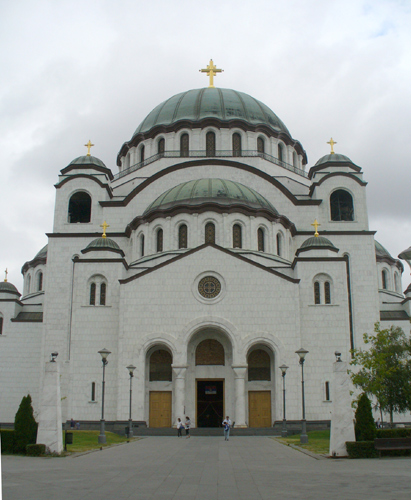 This church is one of the largest orthodox churches in use. It
is dedicated to the Serbian Saint Sava, founder of the Serbian Orthodox Church.
This church is one of the largest orthodox churches in use. It
is dedicated to the Serbian Saint Sava, founder of the Serbian Orthodox Church.
Its dome is 70 meters high and the main gold plated cross is 12 meters high. This gives the cathedral a hight of 82 meters. The domes have 18 gold plated crosses all various sizes while there are 49 bells in the bell towers.
Construction began on the 10th of May 1935. Work lasted until 1941 when the foundation was completed and the walls erected. After the Belgrade bombing in 1941 work ceased altogether but began again on the 12th of August 1985. Walls were erected to a height of 40 meters. The central dome weighing 4,000 ton was built on the ground along with the copper plated cross. Lifting onto the walls took roughly 40 days. The Church was mostly completed by 2004 with the bells and walls installed and the facade complete. Work on the interior is still unfinished.
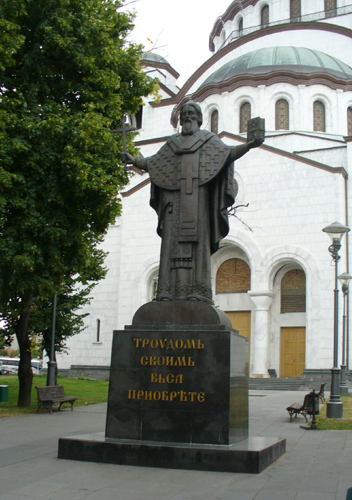 A statue of St. Sava, the first Archbishop of Serbia, from 1219 to 1233.
A statue of St. Sava, the first Archbishop of Serbia, from 1219 to 1233.
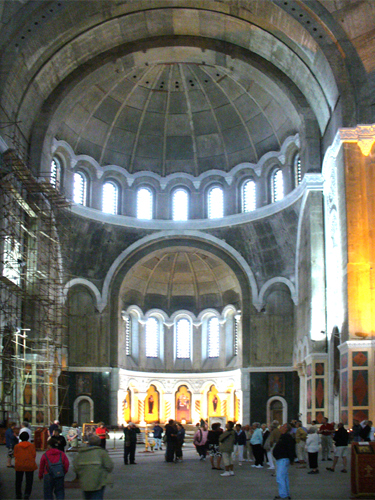
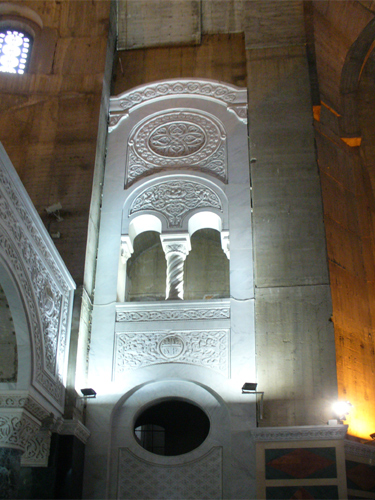
Its surface area on the ground floor is 3,500 square meters and can accommodate 10,000 faithful. The facade is of white marble and granite. The inner decorations will be mosaics.
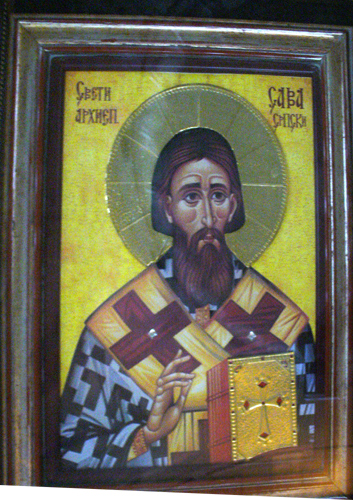
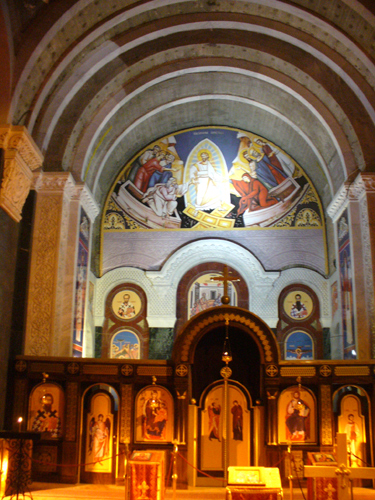
An icon of St. Sava and an iconstasis.
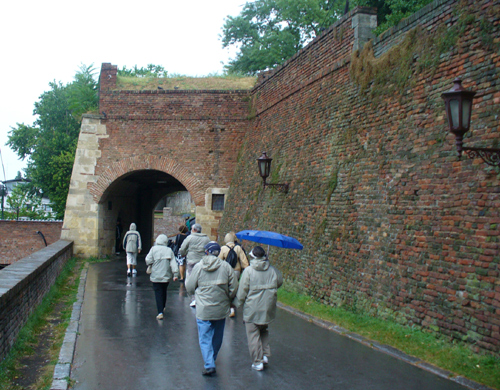 From there we went to the Kalemagdan Fortress in a beautiful park. After the conquest of Belgrade by the Turks (1521), the fortress decayed, but was restored as a military stronghold by the Austrian during their short lived occupation (1717-1739). During the partial independence of Serbia, in the first half of the 19th century, the Kalemegdan fortress was still occupied by a Turkish garrison. In 1862, as an escalation from a fight between Turkish troops and the Serb population, the commander of the Kalemegdan ordered the bombardment of Belgrade. This produced such a backlash in the European public opinion that Serbia succeeded, with the support of the great powers, to obtain the departure of the Turkish troops from Kalemegdan and all the other fortress they still held in Serbia; this resulted in the effective achievement of full independence from the Ottoman empire.
From there we went to the Kalemagdan Fortress in a beautiful park. After the conquest of Belgrade by the Turks (1521), the fortress decayed, but was restored as a military stronghold by the Austrian during their short lived occupation (1717-1739). During the partial independence of Serbia, in the first half of the 19th century, the Kalemegdan fortress was still occupied by a Turkish garrison. In 1862, as an escalation from a fight between Turkish troops and the Serb population, the commander of the Kalemegdan ordered the bombardment of Belgrade. This produced such a backlash in the European public opinion that Serbia succeeded, with the support of the great powers, to obtain the departure of the Turkish troops from Kalemegdan and all the other fortress they still held in Serbia; this resulted in the effective achievement of full independence from the Ottoman empire.
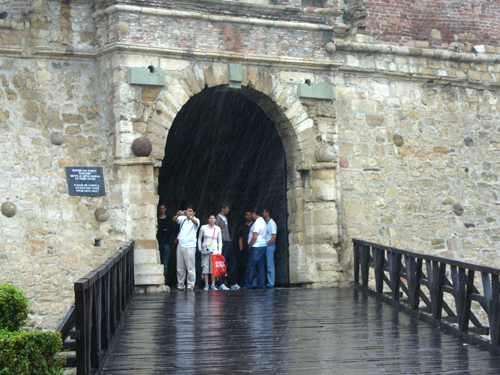 Waiting out a shower at one of the gates.
Waiting out a shower at one of the gates.
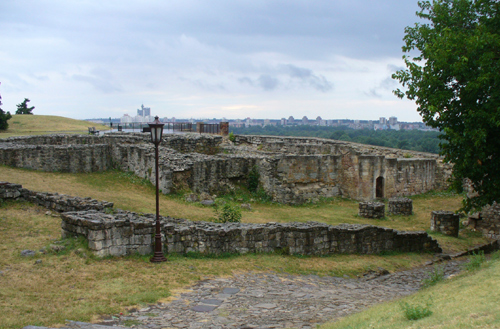 Ruins of the fortress.
Ruins of the fortress.
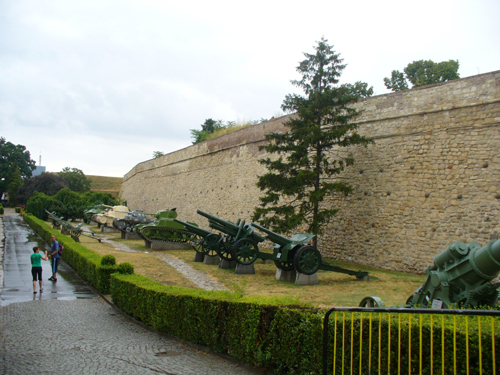 The fortress is also used as a military museum.
The fortress is also used as a military museum.
 Although it was not this dark when we sailed away from Belgrade, we did get a view of the fortress similar to that shown in the Wikipedia photo shown here.
Although it was not this dark when we sailed away from Belgrade, we did get a view of the fortress similar to that shown in the Wikipedia photo shown here.
After a day of contrasts in Belgrade, we next visted Novi Sad.
